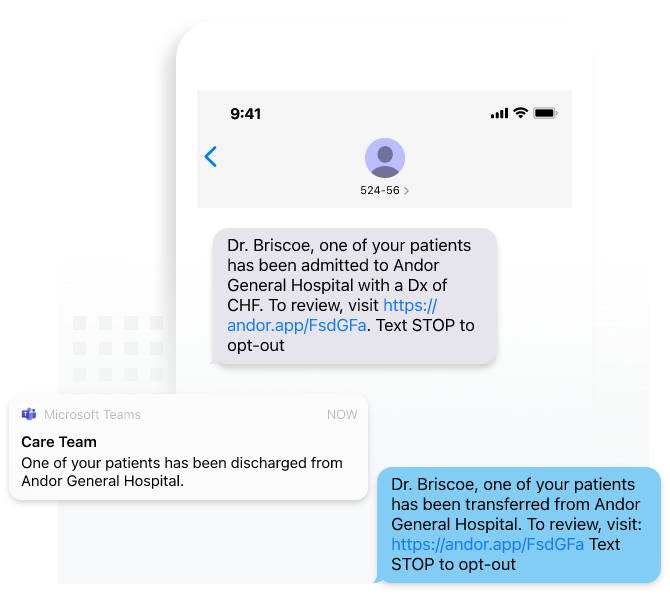Secure staff communication is essential to creating efficient workflows and ensuring quality patient care. ThinkAndor® provides full compliance with the CMS interoperability rules and is fully integrated into communication platforms like Microsoft Teams.
ThinkAndor® virtual assistant powered by artificial intelligence maximizes communication efficiency in health settings and facilitates ADT compliance while optimizing care team notifications by directly pulling data from electronic medical records. Our patent-pending technology leverages AI to notify PCPs of ADT events with real-time and continuous messaging, surface lab results, and enhance telehealth capabilities by retrieving patient records and intake forms.

Because the rule states that all providers must be notified of ADT events, many hospitals struggle to satisfy the terms of the regulation. This includes providers who participate in Health Information Exchanges (HIE) because HIEs are unable to gather discharge and transfer data efficiently to send notifications, creating a significant risk for non-compliance.
CMS sets minimum requirements to provide safe and effective treatment. CoPs address many aspects of hospital operations by setting policies and procedures related to patient rights, clinical documentation, staffing, infection control, and compliance with legislation.
State Survey Agencies and Accreditation Organizations use the CoPs to guide their audits during surveys. These surveys may be unannounced, and deficiencies can lead to certification termination. This is a significant threat given that Medicare patients typically represent approximately 40% of a hospital’s payer mix and Medicaid patients generally represent 20% of a typical payer mix.
8 - 12 minutes of staff time saved per visit
54% reduction in cost per visit
35% decrease in call abandonment
35% reduction in clinician burnout
1-day decrease on average in length of stay